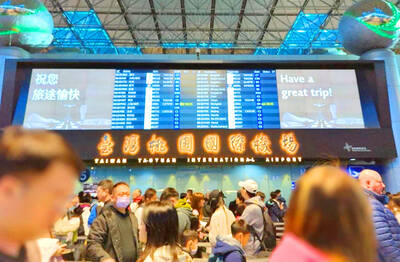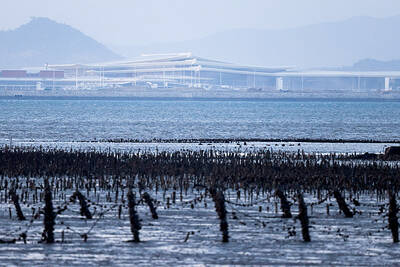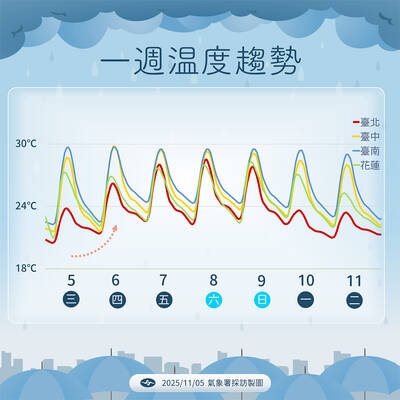China has upgraded its Dongfeng (East Wind, 東風) ballistic missile series, codenamed DF-31AG, which Hong Kong-based military analyst Leung Kwok-leung (梁國樑) believes it has improved its range and precision.
A report published on Monday in the military news section of Sina.com, a Chinese online media portal, includes several photographs of the DF-31AG missile, introducing it as an improved version of the DF-31A.
Leung told CNA that based on China’s latest system of assigning numbers to missiles, the letter “A” represents a nuclear warhead and “B” a regular warhead, while “G” refers to an improved version.
As such, the DF-31 is the basic model, followed by the improved DF-31A, with an expanded range and a nuclear warhead, Leung said, observing that the designation DF-31AG indicates an upgraded DF-31A, which also carries a nuclear warhead.
The Sina report said that based on Chinese ballistic missile taxonomy, the range of a medium-range missile is 1,000km to 3,000km, while an intermediate-range missile has a range of 3,000km to 8,000km. An intercontinental ballistic missile can travel more than 8,000km.
The prototype of the DF-31 had a range of just 8,000km, meaning it could only reach certain parts of the US, making it a less than effective nuclear threat, the report said.
With the DF-31A, the range was increased to more than 11,000km and its accuracy improved, the report said, but there remained shortcomings, including a lack of mobility and an inability to carry multiple warheads.
The latest upgrade, the DF-31AG, incorporates three new features, including an off-road vehicle chassis that improves missile mobility and a multiple independently targetable re-entry vehicle, which enhances penetration capability.
The third feature is an unsupported random launching system that greatly improves mobility and launch concealment, thus improving missile system survivability, the report said.

Three Taiwanese airlines have prohibited passengers from packing Bluetooth earbuds and their charger cases in checked luggage. EVA Air and Uni Air said that Bluetooth earbuds and charger cases are categorized as portable electronic devices, which should be switched off if they are placed in checked luggage based on international aviation safety regulations. They must not be in standby or sleep mode. However, as charging would continue when earbuds are placed in the charger cases, which would contravene international aviation regulations, their cases must be carried as hand luggage, they said. Tigerair Taiwan said that earbud charger cases are equipped

Foreign travelers entering Taiwan on a short layover via Taiwan Taoyuan International Airport are receiving NT$600 gift vouchers from yesterday, the Tourism Administration said, adding that it hopes the incentive would boost tourism consumption at the airport. The program, which allows travelers holding non-Taiwan passports who enter the country during a layover of up to 24 hours to claim a voucher, aims to promote attractions at the airport, the agency said in a statement on Friday. To participate, travelers must sign up on the campaign Web site, the agency said. They can then present their passport and boarding pass for their connecting international

UNILATERAL MOVES: Officials have raised concerns that Beijing could try to exert economic control over Kinmen in a key development plan next year The Civil Aviation Administration (CAA) yesterday said that China has so far failed to provide any information about a new airport expected to open next year that is less than 10km from a Taiwanese airport, raising flight safety concerns. Xiamen Xiangan International Airport is only about 3km at its closest point from the islands in Kinmen County — the scene of on-off fighting during the Cold War — and construction work can be seen and heard clearly from the Taiwan side. In a written statement sent to Reuters, the CAA said that airports close to each other need detailed advanced

UNKNOWN TRAJECTORY: The storm could move in four possible directions, with the fourth option considered the most threatening to Taiwan, meteorologist Lin De-en said A soon-to-be-formed tropical storm east of the Philippines could begin affecting Taiwan on Wednesday next week, the Central Weather Administration (CWA) said yesterday. The storm, to be named Fung-wong (鳳凰), is forecast to approach Taiwan on Tuesday next week and could begin affecting the weather in Taiwan on Wednesday, CWA forecaster Huang En-hung (黃恩鴻) said, adding that its impact might be amplified by the combined effect with the northeast monsoon. As of 2pm yesterday, the system’s center was 2,800km southeast of Oluanbi (鵝鑾鼻). It was moving northwest at 18kph. Meteorologist Lin De-en (林得恩) on Facebook yesterday wrote that the would-be storm is surrounded by